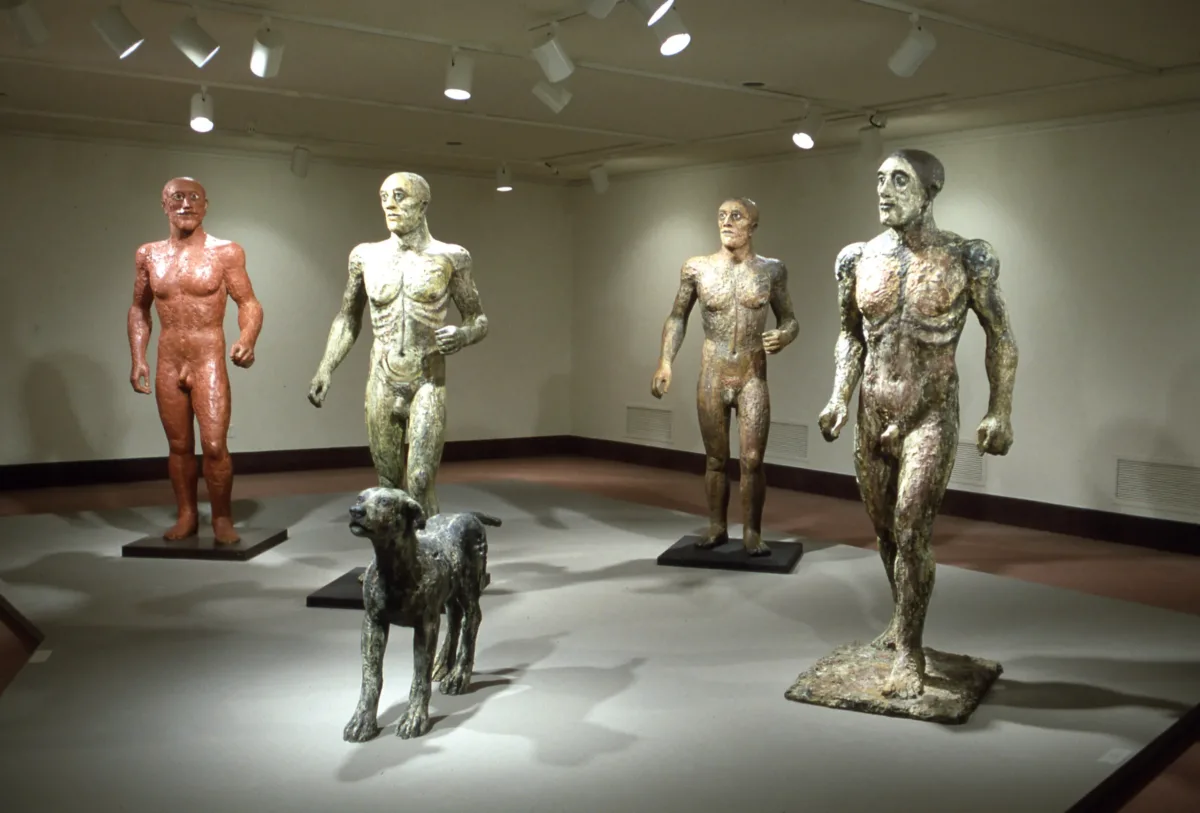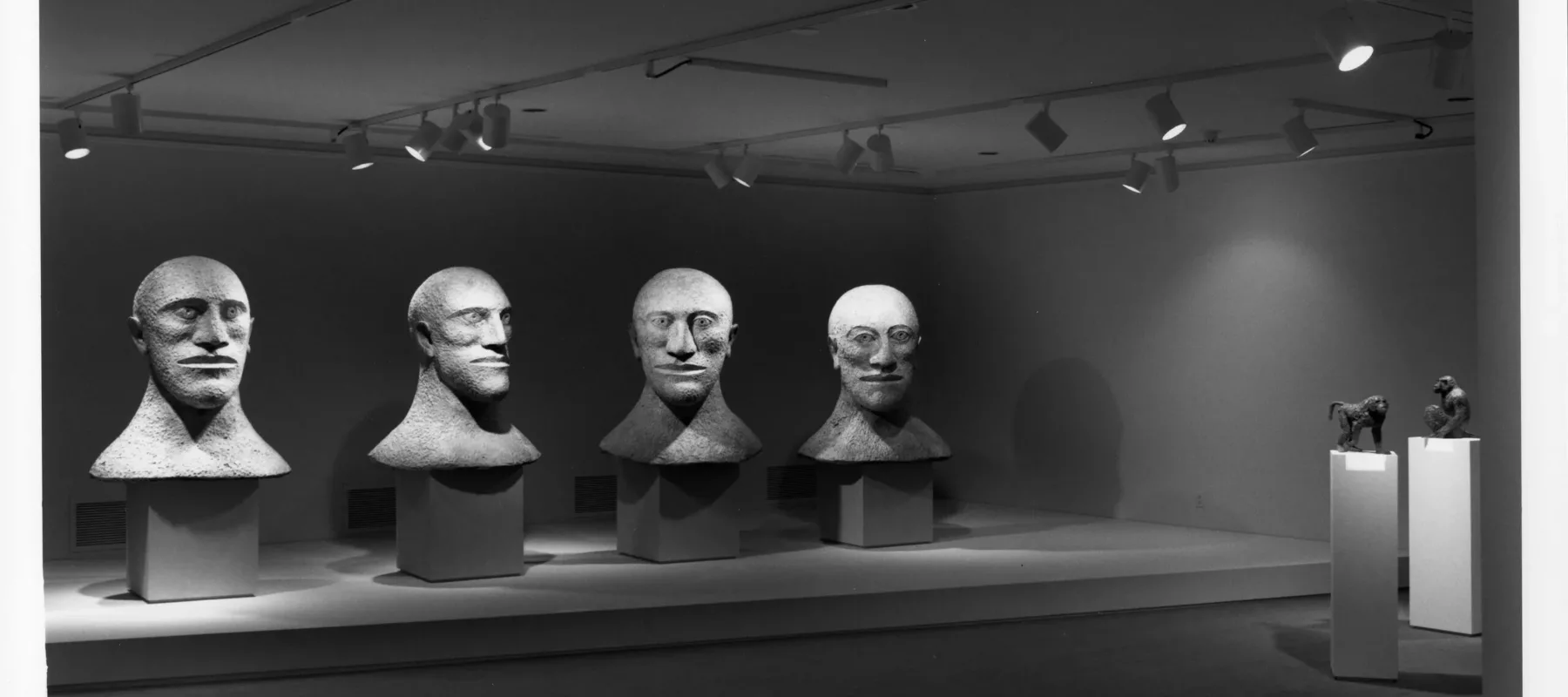NMWA presents the first major retrospective exhibition in the United States of sculpture and drawings by Dame Elisabeth Frink from April 6 through July 4, 1990. Elisabeth Frink: Sculpture and Drawings, 1950-1989 will include approximately sixty sculptures and twenty-five drawings by the British artist.
For over 30 years, Elisabeth Frink has occupied a leading position among British sculptors. Known for both her public and private commissions, Frink’s powerful and monumental cast bronzes of male figures, portrait heads, birds, and animals have received wide acclaim in her native England and internationally. Born in 1930 in Suffolk, England, success came early to Frink. While still a student at the Guildford School of Art where she studied with Willi Soukoup and Bernard Meadows, she won a prize in the competition for the “Monument to an Unknown Political Prisoner,” which was exhibited at the Tate Gallery in 1953.
In the early 1850s, she began producing large, heroic figures of men, animals, and birds characterized by their roughly textured surfaces which came from working rapidly in wet plaster. Her early imagery, the soldiers, predatory birds, pilots, and other winged figures, was strongly influenced by her wartime experiences, having grown up surrounded by airfields. Although her work is not overtly concerned with symbolism, she conveys force and energy through her use of traditional sculptural forms. Such ideas have remained constant throughout her art.
In First Man, 1964, for example, the contrapposto stance and upraised arm of the nude, bearded figure suggest earlier sculptures such as Michelangelo’s Slaves. In very recent works, such as the four-foot-high portrait heads in Desert Quartet,1989, the large eyes and size of the heads express a strength and authority reminiscent of classical art.
Frink’s Horse and Rider, one of many important public commissions, holds a landmark position in London’s Piccadilly Circus. Among her numerous portrait busts are that of Sir Georg Solti which was recently unveiled at the Royal Opera House in Covent Garden and Sir Alec Guinness. Frink’s skills as a draughtsman have always been widely acknowledged. Just a few lines are enough to convey the force and presence of the painting and the boldness and energy of her sculpture. Characterized by their daring use of color, Frink’s images possess a rare vitality, adding a new dimension to her graphics.

Installation image of Elisabeth Frink: Sculpture and Drawings, 1950-1990

